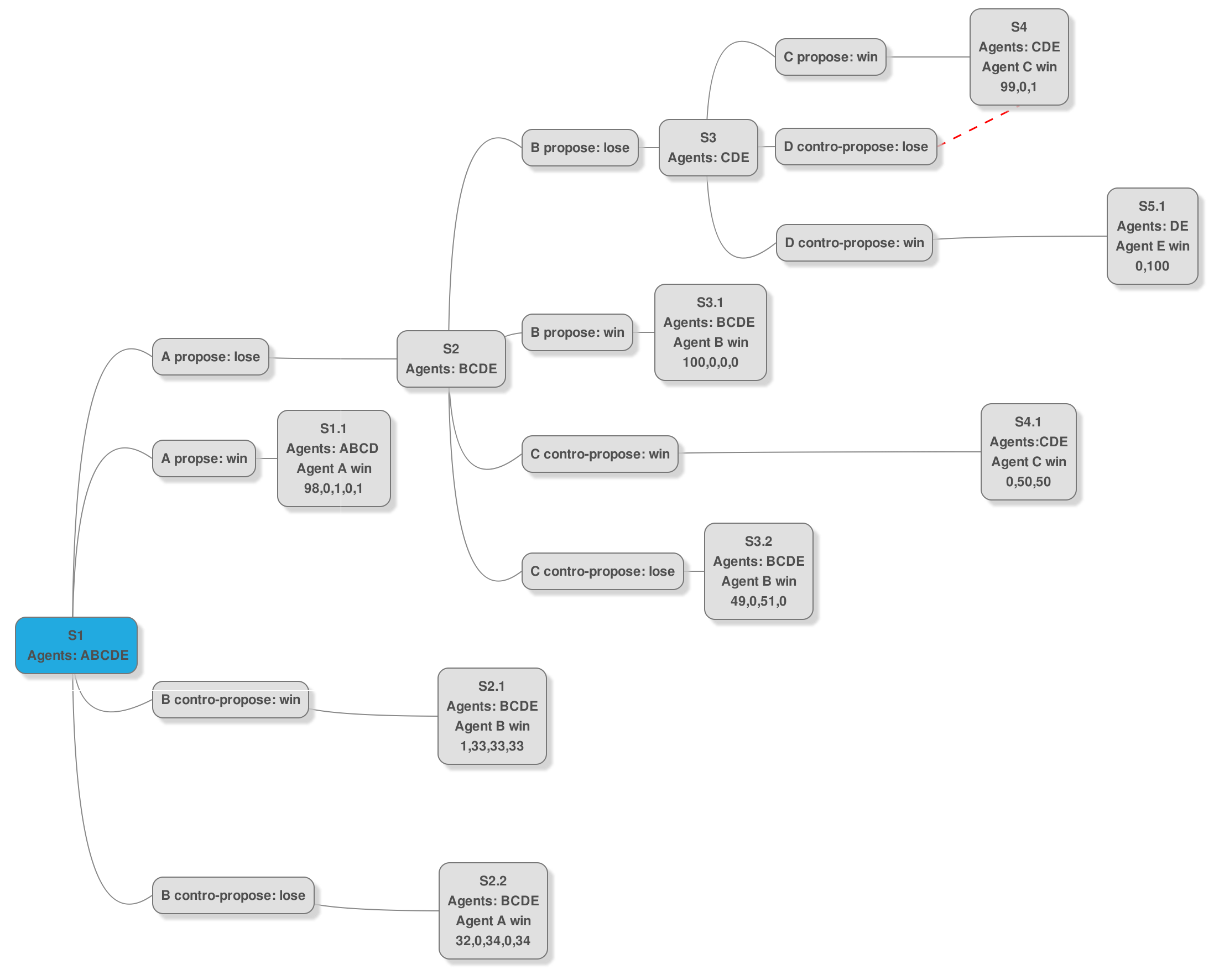To fully understand this map, it must be noticed that all cases ("S") with the first
same number (example "S2.1" and "S2.2") refer to the same "turn". So the second number
represents the possibility. So "S2.1" is an alternative solution to "S2.2", in the 2nd
turn. Every "turn" is defined by the number of pirates alive.
The new rule introduced complicates the reasoning, since the future step determinates the
present one, and, now, also vice versa. In the above map it is not present, but the fisrt
end-state is the same as the normal game, with only pirate D and E alive, and the solution
100,0. We called this state "S5". Considering this winning state, we go to the previuos
step "S4". This again is the same as the normal rules game. Pirate C first proposes the standard
solution: 99,0,1. Now D can make his counter proposal; and for it to be victorious, he needs to
convince E. But D also knows that after his proposal, C will make a final one. If for example
D proposes 0,98,2; then C will propose 97,0,3. Knowing this, it's impossible for D to earn money;
but if D proposes 0,0,100; then C will be obligated to do the same.
Now E will choose D's proposal, because of the 3rd rule of the pirates (if possible, kill
other pirates). Considered so D will propose 0,0,100; so even if he won't get any money, he will
kill C.
This solution implies that "S5.1" is the new solution of step 5, and it
derives directly from step 4. This also shows that C has no possibility to survive in this
step, even if gives away all the money.
Found that there is no solution for step 4 (solution in step 5), let's look at step 3.
Here pirate B knows that in the future step pirate C will die no matter what he tries, so
he is secure of C positive vote. Since B needs 2 votes for winning, and he knows that since
C wants to survive, he can take all the money, relying of C's vote. But the new rule can change,
like we said, future states: C makes a control-proposal giving money to both D and E.
Like in the previous step, since C needs to convince both D and E to win, and C doesn't want to go
to step 4 (where the only solution it's his dead), he will propose 0,0,50,50.
Pirate B has the advantage that he needs only to convince one pirate to win; so he will
propose 51 to D to obtain his vote, and so to win. Not to E because he will rather got to
step "S5.1". So the final state is "S3.2" for step 3.
Following the same reasoning for the previous step, the first A proposal would be "S1.1", that
would be victorious with the normal rules. But B can make a control-proposal, and since he needs to
convince all the other pirates he will divide all the money between them for the same reasons of the previous
steps. Also A has the advantage that he needs to convince only two pirates. So A will choose C and E (pirates
that in the future step won't get any money), and gives them more money then B's proposal.
So the the winning state is "S2.2". Again A can win immediately, but with a very different amount
of money compared to the normal-rules game.


